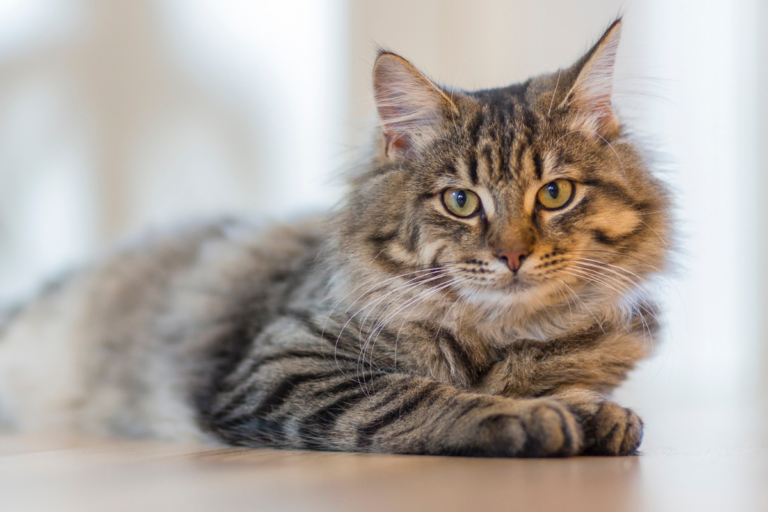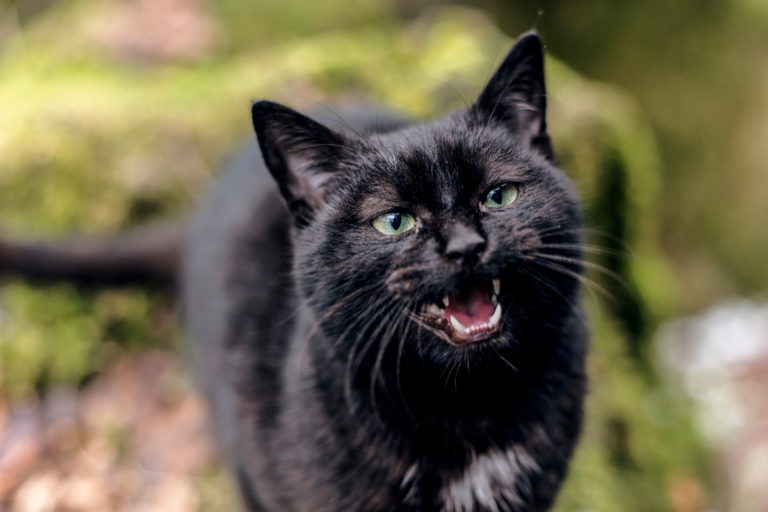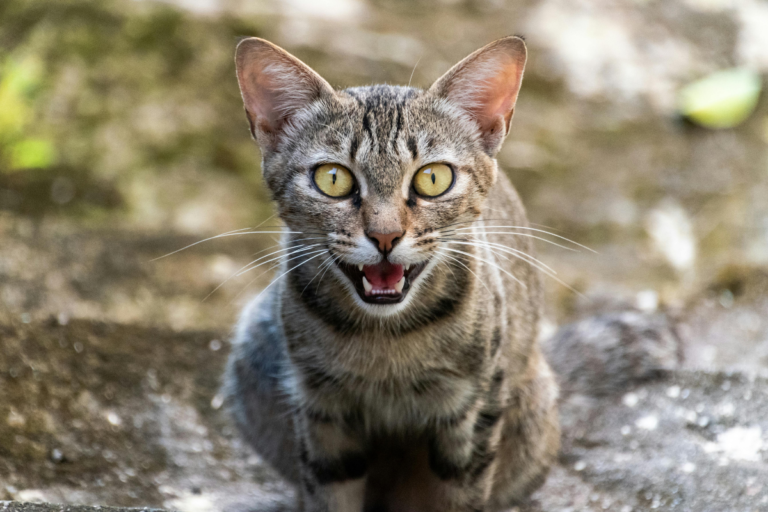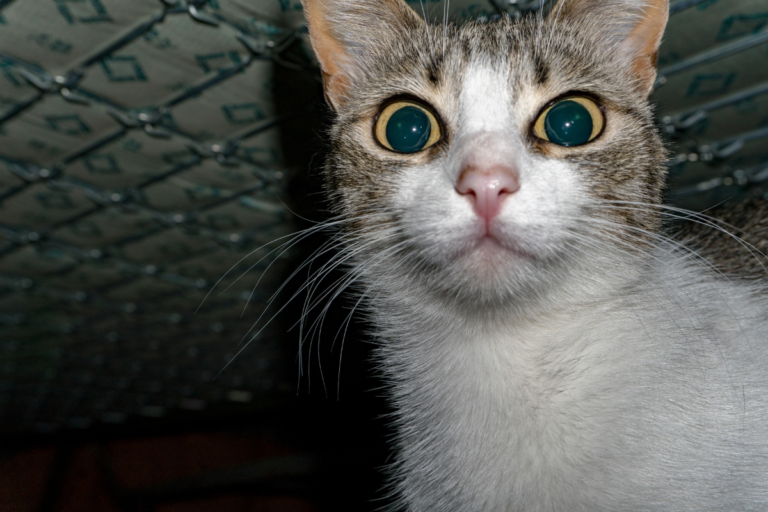Lend Me Your Paws: Navigating Cat Scratching Problems
Understanding Cat Behavior
Common Behavioral Patterns
So, you’ve got a cat, and you’re probably wondering what makes those whiskered wheelers-and-dealers tick, right? Recognizing their common quirks is the secret sauce to a peaceful home life. Here’s the lowdown on some typical kitty antics and what they likely mean.
Playfulness and Hunting Instincts
Cats are born hunters—everything they do screams it. When they’re rolling about, chasing imaginary critters, or batting at the latest catnip toy, they’re just practicing their hunting chops. These little hunting sprees are classic cat stuff—no need to be alarmed!
Scratching
Ever notice your furry pal clawing at your favorite chair? Annoying, but this behavior isn’t just about testing your patience. Cats scratch to mark their territory and give their claws a workout. It’s kinda like their way of working out at the gym. They leave marks and smells in their wake, a bit like posting an “I was here” sign. Don’t worry, we’ve got some cool tips to stop your couch from becoming shredded cheese in our training to prevent scratching section.
Social Interactions
Cats are a mixed bag when it comes to socializing. One day they’re your shadow, purring and kneading you like dough. The next, they’re full-on hermits, enjoying their me-time under a bed or in some hidden corner. That’s just two sides of the cat social coin! Need to know more about that head-butting action? Check out our bit on cat head butting.
Vocalization
Meows—they’re the universal cat language for “Hey, pay attention to me!” Whether they’re telling you they’re hungry or just spilling today’s cat gossip, it all comes out as meows. But if Kitty’s being a chatty Cathy too much, there might be something up. Explore our no-nonsense guide on cats meowing for some clarity on those endless monologues.
| Behavior | What’s Going On? |
|---|---|
| Scratching | They’re marking their turf and nail care |
| Purring | They’re happy or nudging for a pet |
| Hiding | Feeling anxious, or just wanting some alone time |
| Kneading | Pure cat affection and comfort |
Aggression
Troublesome kitty tantrums can be a head-scratcher for any cat owner. It might be your furball’s way of coping with fear, turf wars, or bottled-up frustration. Pin down what’s bugging them and things could chill out. For a deep dive into calming your wild child, peek at our cat aggression section.
Litter Box Use
Neat litter box habits? Key to a tidy home and a purring buddy. Sometimes, cats might decide anywhere but the box is their new go-to. Fixing this is often just a matter of picking the right litter or making the box more inviting. Check out the scoop in our litter box solutions.
Knowing these cat quirks means you’ll soon be the human whisperer for your favorite feline. Ready for more no-fuss cat insights? Our full guide on cats behavior has got ya covered!
Training Techniques for Cats
Training cats can feel like herding squirrels, but it’s oh-so-rewarding, especially when your furniture stops looking like a scratching post. Let’s dish on two tried-and-true techniques: positive reinforcement and clicker training.
Positive Reinforcement
Positive reinforcement is the name of the game. It’s all about celebrating your cat’s good decisions, like picking the actual scratching post over your grandma’s heirloom sofa. What’s on the reward menu? Tasty treats, fun playtime, or a nice ear scratch can all work wonders. See your cat make a smart move? Reward them right away! It’s like teaching a kid to say “please” by dangling an ice cream cone.
| Mantra | Treat |
|---|---|
| Scratches post, not couch | Snack time! |
| Comes running when called | Playtime party |
| Keeps claws off decor | A rub and a hug |
This method’s like relationship magic—it builds trust, makes those adorable purrs come out more, and even helps curb pesky habits like nighttime yowling or Mr. Whiskers throwing shade.
Clicker Training
Clicker training is your secret weapon. Armed with a clicker (that handy doodad that makes a click sound), you can mark every smart move your feline makes. Here’s how to pull off the magic trick:
- Say ‘Hi’ to the Clicker: Click and chow down! Right after the clicker’s sound, give a treat. It’s the ‘click-treat’ extravaganza, teaching your furball that click means goodies.
- Click for Success: Spot a good move, like Simba using his post? Click, then offer a reward.
- Keep Clicking: Repetition’s the key—like that catchy song that gets stuck in your head. The more you reinforce, the more your cat buys into the good behavior gig.
Clicker training is a sharpshooter’s choice—not just for scratching dilemmas, but for handling everything from biting incidents to midnight sing-alongs.
For those with furniture-trashing kitties, our scratching guide and training tips are just the thing. Wrestling with other cat quirks like cat fights or vocal opera stars? Dive into our treasure trove of tips to reclaim peace and quiet.
Addressing Aggression in Cats
Dealing with an aggressive cat can be a tough gig for any pet parent. Figuring out what’s ticking them off and guiding their behavior onto a chill path is key to a purr-fect home.
Identifying Triggers
First thing’s first, let’s find out why your kitty’s acting all hissy. Cats can get worked up for loads of reasons like feeling spooked, fighting for ’em turf, or even because they ain’t feeling so hot. Here’s a cheat sheet to spot what’s setting them off:
| What’s Setting Kitty Off | Why It Might Be Happening |
|---|---|
| Turf Wars | New cat or person crashing their pad |
| Jitters | Loud ruckus or quick movements |
| Ouch! | They might have a pain they can’t tell you about |
| Playtime Gone Wild | Things got a bit too exciting during playtime |
| Hunter Mode | They see something small and fast, like a cheeky bird |
If you wanna dive deeper into how your cat’s mind works, check out our page on cat psychology.
Redirecting Aggressive Behavior
Once you’ve got the lowdown on the triggers, it’s time to spin that bad behavior into something good, without stressing your cat out more:
-
Chill Zones: Cats are like us, they need their space. Make comfy hideouts where they can go when they feel cornered.
-
Play It Out: Break out those toys! Let them stalk and pounce like they’re in the wild by setting up play sessions.
-
Skip the Smacks: Smacking doesn’t fix things. Try a gentle spray or hiss to say ‘no’ without drama.
-
Treat Yo’ Pet: Be all about the love when they behave. A little snack or belly rub goes a long way.
-
Vet Visit: If your cat’s still acting like a tiny tiger, it might be vet time to see if something’s up health-wise.
Still have questions about your buddy’s quirks? Peek at our tips on cat biting and cat yowling.
Litter Box Solutions
So, let’s chat about a universal feline conundrum: the litter box. Not exactly dinner table talk, but if you’ve got a cat, you know it’s a deal breaker. Picking the right litter and ensuring it’s put to good use is like a magic trick that keeps your home smelling and feeling like, well, a home.
Choosing the Right Litter
The type of litter you slap in that box can make or break your kitty’s motivation to do its business where you’d like it to. Check out these options:
| Litter Type | Pros | Cons |
|---|---|---|
| Clumping Clay | Scoop-friendly, fights odors | Dusty, bad for Earth |
| Silica Gel | Sucks up moisture, less tracking | Pricey, risky if eaten |
| Recycled Paper | No dust, saves the trees | Not a champ at odor control |
| Pine | Smells woodsy, good for Earth | Some cats might give it the stink eye |
Knowing what floats your cat’s boat is key here. Switch litter styles too fast, and your cat might stage a protest. Mix a pinch of new litter gradually to see if the finicky furball approves. If you’re tearing your hair out over their bathroom habits, drop by our guides on cat psychology or cats behavior.
Encouraging Litter Box Use
Coaxing your kitty to religiously use the litter box takes a bit of finesse. Here’s the playbook:
Placement of the Litter Box
Location, location, location. Your cat wants to handle business in tranquility, so stow the litter box away from high-stress zones like busy hallways or buzzing machines. Make sure it’s an easy hop for kittens and the older fluffy pals.
Cleanliness
Cats practically invented neat freaks. If the litter box gets grody, they’ll likely give it the cold shoulder. Scoop daily and top up that litter like you mean it. Give it a good scrub with mild soap and water once a week—you’ll thank yourself later for this tip.
Size and Number of Litter Boxes
It’s basically cat house math: one box per cat, plus an extra. Stops any territory tiffs and gives them choices. Make sure those boxes are roomy enough for your feline to spin around with ease.
Positive Reinforcement
When your diva does the deed in the box, shower them with treats or affection. Positive vibes can make this good habit stick. If they’re still flipping you the paw, a vet visit might be in order to rule out anything medical.
Minimize Stress
Stress can totally mess with your cat’s loo rituals. Keep their world peaceful with plenty of play, love, and chill spots. If clawing’s their thing, peek at our solutions on scratching and their turf instincts.
With a little know-how and patience, you and your cat will conquer the litter box saga. For more on feline antics like meowing and surprise art installations, hit up our reads on excessive meowing, male cat spraying, and litter box problems.
Managing Excessive Meowing
Got a cat that just won’t zip it? You’re not alone. Dealing with a chatterbox kitty comes with its own set of headaches. Let’s figure out why they’re so vocal and how you can tone that down so everyone in the house stays sane.
Understanding the Reasons
Ever wonder why your cat’s meowing up a storm? Turns out, they have a whole bunch of reasons for their noisy outbursts:
- Attention Grabbers: Just like kids shouting “look at me!”—cats meow to snag your attention, whether they need something or just want to hang out.
- Hungry Hunger Hippos: If your feline spots you near the food stash, it’s meow-time city.
- Lonely Hearts Club: Cats can belt out meows when they feel left out or when boredom sets in.
- Stressed-out Felines: New pet in the house or moving that couch again? Cats might respond with a melody of stress calls.
- Ouchies or Illness: Sometimes they’re trying to tell you “something’s off,” and a vet visit might be in order to play doctor.
Figuring out why your cat’s yapping is step numero uno. Need more scoop on their noisy antics? Peep our cats behavior page.
Tips for Reducing Meowing
Got the whys figured out? Awesome, here’s how you can curtail the cat chatter:
- Attention Fix: Give your cat some love with playtime and attention—that’ll curb attention-hungry meowing.
- Feed That Belly: Stick to a clear-cut chow schedule so your kitty ain’t singing the hunger blues.
- Play Hard, Nap Hard: Stock up on toys, scratching stuff, and games. Keep them so busy, they forget to meow.
- Stress-Free Zone: Spot what’s stressing your cat and chill out the vibe—slowly introduce new pets or change things up gently.
- Don’t Cave In: Ignore meows outside of meal hours. With time, you’ll train them to keep it down.
- Health Check: Hit the vet regularly to dodge any health scares sneaking up on your chatterbox.
| Why They Meow | What to Do About It |
|---|---|
| Attention Grabbers | Set aside regular fun and cuddle sessions |
| Hungry Hunger Hippos | Keep feeding times steady and predictable |
| Lonely Hearts Club | Load up on toys and activities |
| Stressed-out Felines | Ease in changes and keep it cool |
| Ouchies or Illness | Regular vet visits are a must |
Need more advice? Dive into our cat meowing loud and cat always meowing articles for deep cuts on quieting the kitty chorus.
Got that kitty’s chat dialed down? Fantastic. You and your furball get closer to that sweet, peaceful coexistence. For more on nocturnal meowing, catch our article on cat meowing at night. Enjoy the low-volume life!
Dealing with Scratching
Oh boy, cat scratching is fun, isn’t it? But seriously, if your clawed companions are tearing up the curtains, don’t worry. With a sprinkle of understanding and a dab of training, you can turn those little tykes into polite housemates.
Why Cats Scratch
Cats love to show off, and scratching is their way of saying, “Look at me, I’m a tiger!” It’s how they leave their paw prints, quite literally, all over your living room. Let’s chew over what gets those kitty claws going:
- Marking Their Turf: Little stinkers have scent glands in their paws. When they scratch stuff, it means, “This is mine. Hands off.”
- Yoga for Felines: Scratching is a feline stretch routine. The bendy little contortionists love a good flex while slicing up your sofa.
- Claw Feng Shui: Gotta keep those claws on point! Scratching files down the old nail layers – it’s kitty manicure time.
- Stress Buster: Ever had a rough day? Cats do too. Scratching is their therapy to chill out and enjoy the catnip vibes.
For more enlightening info on your furrball’s antics, take a peek at our cats behavior.
Steering the Scratching
Who knew scratching could be redirected to more appropriate targets? Here’s some slick tricks to have your cat behaving like a gentleman—or lady.
-
Scratching Post Paradise: Get a bazillion scratching posts. Okay, maybe just a few. Spread them around the house like cat-approved art fixtures. Make sure they’re tall and strong, able to handle an exuberant kitty stretch.
-
Good Vibes Only: When fluffy uses the right object, break out the treats and happy dance. Give loads of cuddles too. Cats are suckers for a nice reward.
-
Temptation Tapes: Wrap unwanted targets in stuff that says “no” in cat language. Or cover up the good stuff till kitty learns to aim their claws elsewhere.
-
Catnip Magic: Sprinkle a little kitty crack…er, catnip on that post. Cats dig it, and they’ll be all over their legal high avenue.
-
Feliway Wizardry: Spray this trusty potion wherever you don’t want scratches. It might just keep the claw monster at bay.
| Technique | Cool Factor (1-5) |
|---|---|
| Scratching Posts | 5 |
| Good Vibes Only | 4 |
| Temptation Tapes | 3 |
| Catnip Magic | 4 |
| Feliway Wizardry | 3 |
Up your idea arsenal by exploring our cat psychology page.
Remember, training a cat isn’t an overnight gig. Buckle up for patience land, where consistency reigns supreme. With a pinch of love and these brainy tricks, you’ll master the wild art of cat scratching. For more stellar advice, wander over to tips for straightening curly hair – wait, wrong pets, won’t help here!
By the way, keep those nails in check with a regular trim, sparing your beloved couch some drama. For more scratching solutions and a cheeky debate on extreme measures, swing by declawing cats.






